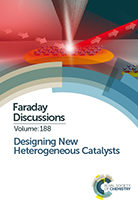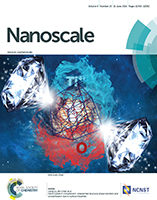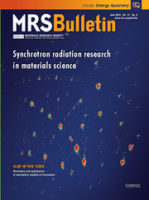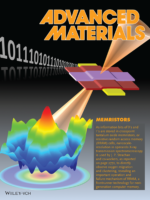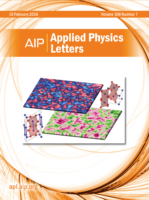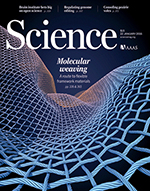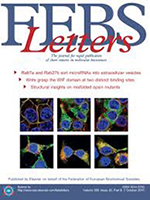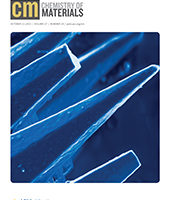Many functional materials (e.g. catalysts) critically depend on the spatial distribution of surface active sites. However, most spectroscopic measurements are ensemble-based, where reactivity is averaged over millions of nanoparticles. Here, carbene attached to nanoparticle surfaces serves a model system for studying catalytic reactions on single nanoparticles. Read more »
Journal Covers
Nanocrystals in compression: unexpected structural phase transition and amorphization due to surface impurities
We report an unprecedented surface doping-driven anomaly in the compression behaviors of nanocrystals. The results suggest that the physical properties of the interior of nanocrystals can be controlled by the surface, providing an unconventional and new degree of freedom in search for nanocrystals with novel tunable properties that can trigger applications in multiple areas of industry and provoke more related basic science research. Read more »
Quantitative Microstructural Imaging by Scanning Laue X-ray Micro- and Nanodiffraction
Synchrotron Laue x-ray microdiffraction turns 20 this year. The June 2016 issue of MRS Bulletin is dedicated to synchrotron radiation research in materials science and features a review article on the current capabilities, latest technical developments, and emerging applications of Laue x-ray micro- and nanodiffraction co-authored by ALS beamline scientist Nobumichi Tamura. The cover image shows a Laue x-ray microdiffraction pattern from a sea urchin tooth taken on Beamline 12.3.2. Read more »
In-situ Characterization of Highly Reversible Phase Transformation by Synchrotron X-ray Laue Microdiffraction
In situ measurement of the orientation matrices for the austenite and martensite phases of the alloy Cu25Au30Zn45 across the interface was performed by synchrotron x-ray Laue microdiffraction at the ALS. Together with theoretical calculations, researchers verified directly and quantitatively the factors that contribute to the alloy’s elastically compatible interface, which ultimately leads to the ultralow fatigue property of phase transformation in martensitic materials. The approach can be generalized to characterize the evolution of microstructure when the transport properties are sensitive to the structural compatibility at the heterogenous phase boundaries. Read more »
Direct Observation of Localized Radial Oxygen Migration in Functioning Tantalum Oxide Memristors
As information bits of 0s and 1s are stored in crosspoint tantalum oxide memristors, or resistive random access memory (RRAM) cells, nanoscale-resolution in operando x-ray transmission spectromicroscopy is used to directly observe oxygen migration and clustering, revealing an important operation and failure mechanism of RRAM, a frontrunner technology for next-generation computer memory. Read more »
The Phase Transition in VO2 Probed Using X-ray, Visible and Infrared Radiations
The nearly simultaneous Mott (electronic) and Peierls (structural) transitions in vanadium dioxide are of significant scientific interest and have tremendous technological promise in computing, memory, optics, and micromechanics. The cover features nanoscale-resolution maps of the Mott and Peierls transitions imaged simultaneously by Kumar et al. using state-of-the-art in situ STXM at the ALS. Read more »
Weaving of organic threads into a crystalline covalent organic framework
Threads made from organic molecules linked by strong covalent bonds were used to weave a 3D covalent organic framework with unusual dynamical and mechanical properties. This molecular weaving method will enable the production of materials with increased precision and functionality. Read more »
Following the Morphology Formation In Situ in Printed Active Layers for Organic Solar Cells
Time-resolved scattering measurements reveal the complete solidification process inside the photoactive layer of an organic solar cell. With an industrial slot-die coater integrated into the beamline, aggregation and crystallization processes can be tracked to reveal the structure-function relationships in the final thin film. Read more »
Misfolded opsin mutants display elevated β-sheet structure
Mutations in rhodopsin can cause misfolding and aggregation of the receptor, which leads to retinitis pigmentosa, a progressive retinal degenerative disease. Förster resonance energy transfer (FRET) and Fourier transform infrared (FTIR) microspectroscopy were utilized to probe within cells the structures formed by G188R and P23H opsins. Read more »
Narrowly Distributed Crystal Orientation in Biomineral Vaterite
The cover shows a scanning electron micrograph of vaterite crystals formed by the sea squirt Herdmania momus. These are the largest single crystals of vaterite ever observed, including biogenic, geologic or synthetic vaterite. Flat crystal faces are uncommon in biogenic crystals, but these crystals are clearly hexagonal pyramids. Pokroy et al. show that these crystals have smooth fracture surfaces; thus, they most likely formed ion-by-ion, rather than by attachment of particles. Narrowly distributed orientations and lack of organics at crystal interfaces suggest a new mechanism of biomineral crystal growth, perhaps spherulitic growth from solution. Read more »
